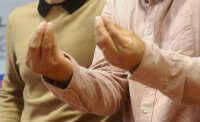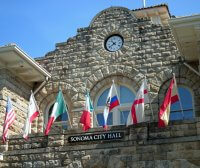Because we are imaginative and creative, people naturally idealize situations, others and ideas. When we idealize, we elevate something and imbue it with a sense of perfection. When we idealize love, virtue, compassion, truth, beauty and the like we feed positive emotions. When we idealize violence, we feed satisfaction in hatred and killing
Idealized violence permeates world society. In honor societies (like ancient Greece or today’s Middle East) killing fulfills cultural imperatives often related to sex, possessions and insults. Unfaithful wives, sexually active sisters, and women in general are subjected to stoning, lashing and murder at the hands of fathers, brothers and cousins. In these patriarchal cultures, such killing is bound to moral and religious justifications which absolve the perpetrators of responsibility or punishment. This is one form of idealized violence.
In Western societies, idealized violence often takes the form of institutional killing carried out by the state, the military, and the police using advanced weapons, firearms and technology. Those deemed enemies of the state are identified, hunted, targeted, captured and killed, and such violent activity is idealized under justifications of security, preemptive action or revenge.
During the past 10,000 years, untold tens of millions, perhaps hundreds of millions, have been killed through the operation of idealized violence. Only 500 years ago, the indigenous people of North and South America, Africa, and the South Pacific were slaughtered wholesale for land, resources and money with the help and approval of the colonial powers that dominated the globe. Idealized violence conducted in the name of God took the lives of millions in religious wars. Cultural and racial bigotry, and the idealized violence borne of such beliefs, killed tens of millions during the 20th century alone; sadly, the 21st century appears to be following suit.
That violence exists within human society is a fact. There have always been, and most probably always will be, individuals who are violent. Individual violence does not kill millions, of course, and crimes of passion, for example, are not generally forms of idealized violence. In the mind of the perpetrator such crimes might include justifications related to jealousy, betrayal, disloyalty, adultery, and the like which place blame of others at the fulcrum of violence. Similarly, killings by sociopaths and the insane are not idealized violence, but rather are the product of paranoid, delusional or otherwise pathological social behaviors.
Idealized violence is most often institutional. Government leaders often send armies into war in the cause of idealized violence. Occasionally, armed conflict between nations consists of straight-forward defense against naked aggression, not necessarily idealized violence as such, but these conflicts are commonly politicized and easily morph into narratives of idealized violence. Today, America’s object of idealized violence is hidden half a world away, a “war on terror” using remote controlled killer drones. Idealization of this violence is then applied to military tactics and fighting forces, tactics which in retrospect (as former Secretary of Defense Robert MacNamara retroactively characterized American conduct in Vietnam in the documentary “Fog of War”) would otherwise be called war crimes.
Is it possible to create a society that does not idealize violence? It is one thing to engage in conflict and yet another to glorify it. Idealizing violence helps recruit volunteers, but war and the suffering it inflicts on the innocent has always been and remains the single greatest failure of human society.







Be First to Comment